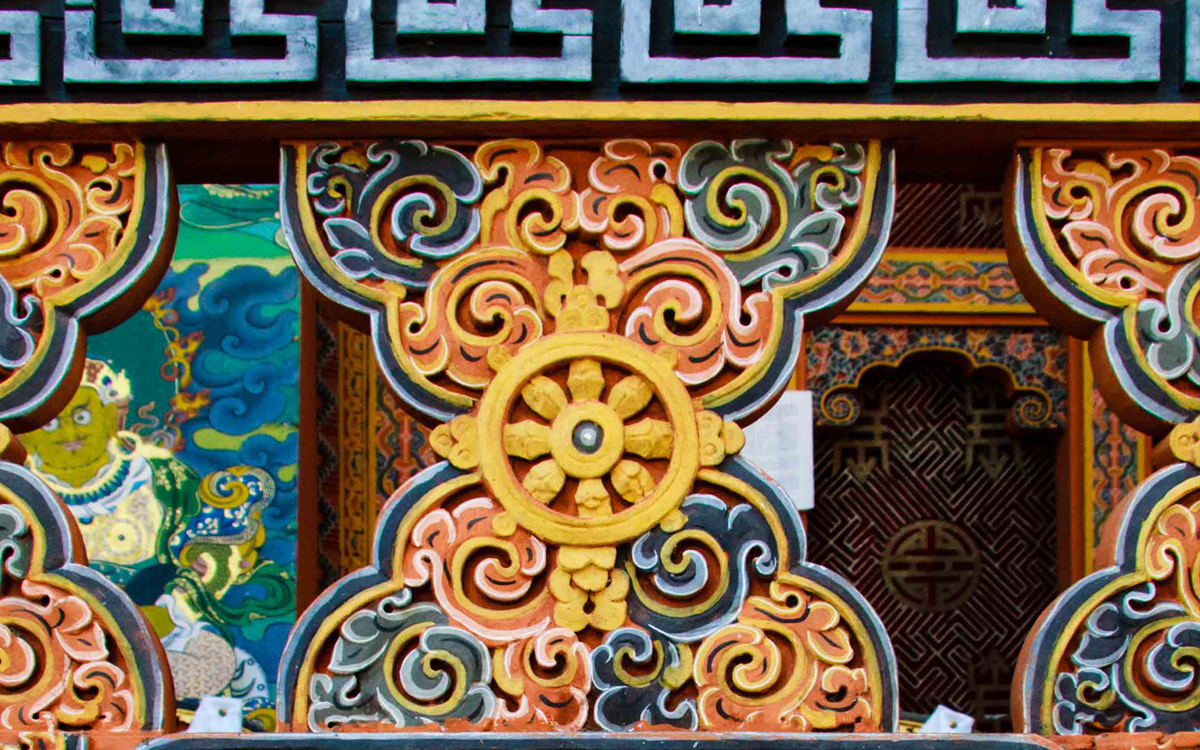This art can be broadly classified as Tshem drup the art of embroidery lhem drup the art of appliqué and Tsho lham the art of traditional Bhutanese boot making. It is anonymous religious and performs no independent aesthetic function.

The Traditional Arts And Crafts Of Bhutan Taste Of Bhutan
Ad Popular Attraction Canvas Art.

. The master painters would never sign on their works and it is believed that the act of creating a religious painting earns great merit and should be done with a pure mind. According to their tradition the arts are concerned with interpreting values rather than describing facts. It has no independent aesthetic function it is religious and anonymous.
The former is freely assignable in whole or in part. It is religious and anonymous. If a work of art bears a name it is usually the name of the person who commissioned it not the artists because the importance of the craft lies in the craft itself not in those who produce it.
It has no independent aesthetic function it is religious and anonymous. Yankee Stadium Golden Gate Bridge Yellow Stone. Master painters known as lharips have their work displayed in dzongs temples and monasteries everywhere in the form of murals and frescoes.
The mere sight of these enormous scrolls is believed to cleanse the viewer of his sins and bring him closer to attaining nirvana. From the Buddhists monks making intricate sand mandalas to the woodworker carving a garish mask art is seen as a religious experience leading to enlightenment. The art of embroidery and appliqué are normally practiced by monks.
It is so ingrained in the daily lives of Bhutanese that it can be overlooked sometimes taken for granted and might have even failed to. It is religious and anonymous. Intricate wall paintings and thankas wall hangings most historical writing and fine sculpted images all have a religious theme.
It has three main characteristics. They are bounded by the very strict iconographic conventions and their first responsibility is to observe them scrupulously. Paintings can also be found with images of the Buddha or other deities.
Art speaks for itself the same as each representation of belief and value. Moreover it is the process of creating the paintings that is important most traditional painting is anonymous without an artists signature. Bhutanese art reflects major Tibetan influences though it has developed many of its own derivations.
Art here has two main characteristics. Traditional Bhutanese art one that arises from a culture that is deeply rooted in the Buddhist tradition is omnipresent. Collective and anonymous works are protected for fifty years after publication.
Bhutanese paintings is an ancient art that has been practiced for many generations. Three characteristics are typical for Bhutanese art. Three characteristics are typical for Bhutanese art.
All Bhutanese art dance drama and music has its roots in the Buddhist religion. The traditional arts work is to make a work of faith and discipline. The traditional Bhutanese arts have two main characteristics.
Bhutan art of Zorig Chosum contains 13 arts and crafts. Up to 24 cash back Bhutans unique spirit and identity is also reflected in the arts and crafts which are all religiously rooted. Bhutanese art is anonymous religious and as a result it has no aesthetic function by itself.
Bhutan art of Zorig Chosum contains 13 arts and crafts. Art Bhutans unique spirit and identity is also reflected in the arts and crafts which are all religiously rooted. A perfect example of this art form are the massive thongdrols or thangkas huge scrolls depicting religious figures that are displayed during annual religious festivals.
Three characteristics are typical for Bhutanese art. Applied art is protected for twenty-five years from creation. A Bhutanese does not view a painting or a statue as a work of art but as a religious work.
They typically depict human beings and their interaction with nature. Bhutanese intellectual property law recognizes both economic and moral rights of the author. Most Bhutanese art including painting are religious by nature.
It has no independent aesthetic function it is religious and anonymous. Portraying deities plants and animals and more art is used to decorate the homes temples and everyday objects of the Bhutanese people. Bhutanese painting is an ancient art that has been part of the Bhutanese culture for generations.
Natural pigmented soils are used in Bhutanese paintings and it is commonly found in the country. Paintings are not signed paintings have no copyright. Thus these objects decorate every home.
The Bhutanese tradition of painting is called lhazo. These vary from paintings and thankas wall hangings to sculptures weaving paper making wood carving carpentry blacksmithing swordmaking boothmaking thazo. Tzhem zo or the art of tailoring is a popular art amongst the Bhutanese.
However one important aspect of Bhutanese art is that it is always anonymous. Bhutanese arts and crafts have been undergoing a period of revival in recent years. Bhutanese art and craft.

Pin On Choki Traditional Art School

13 Traditional Arts And Crafts Of Bhutan





0 komentar
Posting Komentar